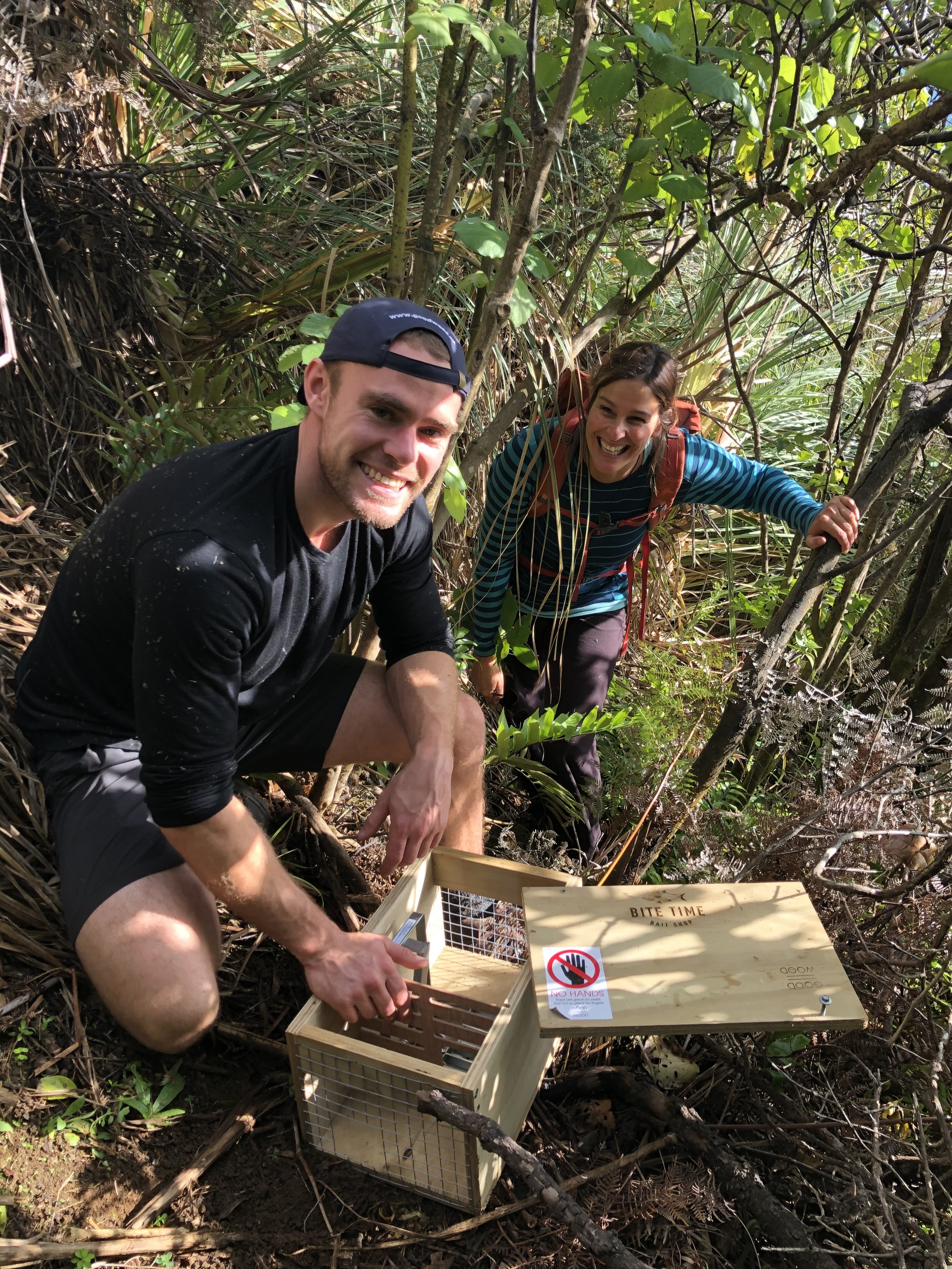
Te aroturuki i ngā koiora o te ao tūroa
Wildlife monitoring
Just 200 years ago, seabirds filled every ecological niche on Karioi from the beach and coastal forests to the mountaintop and every year thousands of seabirds flocked to this mountain to raise their chicks. Now, only two remnant species, ōi /grey-faced petrel and kororā / little penguin make Karioi their home. Less than 40 breeding pairs of ōi and only a handful of kororā attempt to raise their chicks each year. The grey-faced petrel is one of the few burrowing petrel species that still breed on the mainland.
Ongoing monitoring and predator control give native species the best chance at success. The Karioi Project monitors forest birds through five-minute bird counts, bat populations using acoustic monitoring and predator populations using tracking tunnels, wax tags and 24-hour wildlife cameras. Grey-faced petrel and little blue penguin burrows are monitored between April and December each year.
Between 2017 - 2023, we have seen 47 ōi chicks fledge and several kororā, but there is still much work to be done. Every year we are encouraged to find more ōi burrows and more seabirds returning to our shores.
How do we protect seabird burrows?
Seabird species dog visits
A seabird dog visits each year to help us locate new burrows and identify any active burrows. This helps us to focus our efforts on the areas that need it most.
Field cameras
We use field cameras and regularly check these as part of our monitoring programme. This helps us see when birds visit the burrows, when chicks are fed, or fledge the nests, or if any predator incursions occur.
Predator control
We intensify our predator control efforts around active burrows and adapt our methodology as needed. This involves installing different traps, and baits, and clearing these frequently.
Burrow visits
We have a dedicated team of seabird monitoring specialists who frequently visit burrows (multiple times a week in the busy season) to assess activity and respond to predator threats.
Without ongoing active monitoring and predator control, ōi will be lost from Karioi. Our seabird monitoring programme aims to give seabirds the best chance at success by protecting active breeding burrows and monitoring nesting success.
Be part of the solution, and help the ōi by becoming a volunteer, donating or joining the Backyard Hub!
Or read about other ways we are working towards our desired outcomes:
What started as a few short traplines has become a network of hundreds of kms of traplines and bait lines. We also encourage locals to trap in their own backyard. Overall, our network of multi-species predator control spans over 3000 hectares.
Predator control
Environmental education is a key element of the Karioi Project. We connect tamariki with nature, to foster an appreciation and understanding of ecology and the local environment. Our education programmes encourage kaitiakitanga, leadership and behavioural change while promoting well-being, hauora and resilience.
Education
The Karioi Project works with and within the Whāingaroa community. Between our education programmes, the Backyard Hub, and many dedicated volunteers, we are now involved with many households in the community. We are grateful for the input of our local steering group and the support of many local businesses and organisations.









